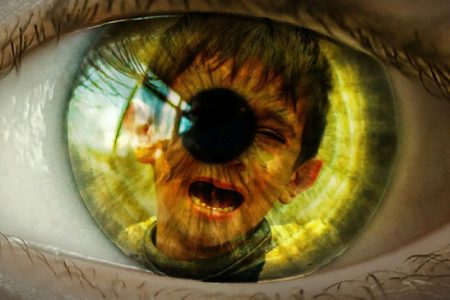Should research always be fun?
Sometimes it is necessary to elicit negative feelings in studies. For example, by getting socially anxious participants to give a speech that will be judged by peers. A difficult task for participants, but it results in important insights in this disorder.
Ethics
There are many rules researchers must comply with in designing their studies. Each university has an ethical committee to make sure that researchers treat their participants well. That’s a good thing, because some studies from the past are now seen as terribly unethical. For example, in the famous Stanford prison experiment, participants were either assigned the role of prisoner or prison guard and had to play this role for two weeks. However, the study was stopped prematurely because things got out of hand: the guards became increasingly sadistic and the prisoners began to show signs of severe emotional distress. Another example is the well-known experiment by Milgram in which participants were instructed to administer electrical shocks to ‘another participant’ (participants believed there was another participant, though this was not actually the case). Many participants gave lethal electrical shocks to the ‘other participant’ during this experiment, even when they could hear that the other participant was in pain (again, this was not true).
On the borderline
Sometimes it is necessary for your research design is ‘on the borderline’ of what is considered ethical. Studying stress is not possible without eliciting stress, and studying anxiety is not possible without eliciting anxiety. In conducting studies of this kind, it is very important to watch your participants closely. Participants should be able to stop at any point during the study. Researchers should also consider carefully whether the results outweigh the inconvenience for the participants.
Speech task
One example of an ‘unpleasant, but necessary’ study is administering a speech task in socially anxious people. People with social anxiety disorder are extremely shy. They fear and avoid social situations because they think that others will evaluate them negatively. This turns even the ‘simplest’ events of daily life, such as walking down the street or grocery shopping, into major obstacles. As a consequence, social anxiety disorder influences almost every aspect of these individuals’ lives.
Measuring reactions to social stress
In order to improve therapy for people with social anxiety disorder, we need to know more about how they react to socially stressful situations. However, to measure their reaction to social stress, we need to elicit these feelings. One way of doing this is to use a speech task: participants are asked to give a speech in front of an audience or video camera. In our version of this task, participants first watch a movie of ‘a previous participant’ performing this task and telling us about herself and her positive and negative qualities (in reality, this was a friend of mine). After this, participants have five minutes to prepare their own speech about their positive and negative qualities. We videotape their speech and tell them that it will be evaluated by a peer (which was not actually the case). After the speech, participants have five minutes to recover from this experience. At the end, we tell participants that we will not show their video to a peer.
Difficult for the researcher
This task is very unpleasant for socially anxious people, and even many non-socially anxious people don’t like it. As a researcher, I find it a bit difficult to administer this task, because I already know that socially anxious people are likely to feel very uncomfortable. However, I believe it is important to use tasks like this to study the reaction to social stress.
Differences during anticipation and recovery
We administered this task in high versus low socially anxious participants and focused on EEG measures of brain activity. As expected, high socially anxious participants reported being more nervous throughout the task. There was no difference in brain activity before the task, when participants were just sitting still. However, during the five minutes immediately preceding the speech (anticipation) and immediately after the speech (recovery), high socially anxious individuals showed increased brain activity. This activity displayed what is probably heightened communication between subcortical (emotion-related) and cortical (control-related) brain regions. So, it seems as though high socially anxious participants were worrying/thinking more about the socially stressful situation than low socially anxious participants were. This is an important finding for therapy, which we would not have had if we had not elicited stress in these participants.
Brave socially anxious people
So, I believe research should not always be fun. It is sometimes necessary to elicit anxiety or stress in participants. Of course, this should only be done if it leads to useful research findings and if participants are monitored continuously. I would like to end by thanking the brave socially anxious people who participate in this kind of task: it’s really helpful!




